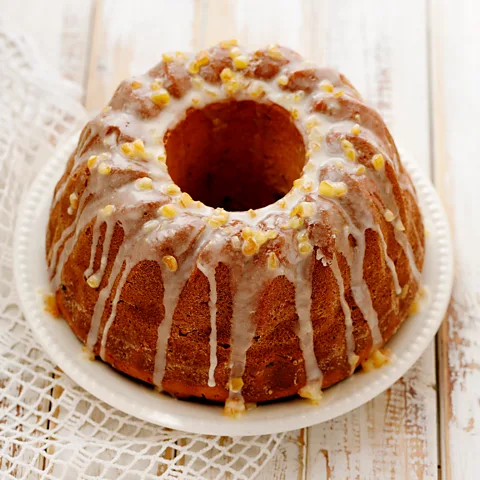Because of their high fat content and emulsifying properties, the egg yolks also make the baba last for longer without having to add any preservatives and give the finished product a beautiful golden-yellow colour.
In the past, serving such a rich pastry was a status symbol. “Fat was more expensive than even the most expensive of meats,” says Jarosław Dumanowski, a food historian at the Nicolaus Copernicus University in Toruń. The recipe also calls for 400g of butter for every kilogram of flour, which acts as carrier for the vanilla flavour. Some households even added saffron, one of the most expensive spices. “These were exotic things from far away so that rich people could distinguish themselves from the rest,” Dumanowski says.
When Malarski and his partner, Albert Judycki, decided to offer a baba at Lukullus bakery, they tested several dozens of versions, both old and modern, before deciding on a clear winner: the muslin baba. “The muslin baba was beyond compare. It melted in your mouth and remained fresh for longest,” Malarski says. They use bourbon vanilla from Madagascar and cover the Baba 96 in homemade lemon glaze. The muslin baba has been making a regular appearance at Lukullus at Easter ever since.
When I ask Malarski about the popularity of this particular baba despite it being so rich and labour-intensive, he replied: “It’s the best. If someone tries it, they never want to go back. They miss it too much.”
 Getty Images
Getty ImagesMuslin baba recipe
Adapted from Old Polish Traditions in the Kitchen and at the Table
Ingredients
24 egg yolks*
300g sugar, setting aside 1 tsp
½ cup lukewarm milk
60g fresh yeast (or substitute 21g of instant yeast instead)**
250g flour, setting aside 1 tsp of flour
1 vanilla bean, seeds scraped out (or substitute 1 tsp vanilla extract)
100g butter, melted, plus more for the Bundt pan
lemon glaze (optional)
candied orange or lemon peel (optional, for decoration)
Method
Step 1
In a heated bain-marie, beat the egg yolks and sugar (what remains after separating out 1 tsp) until white and fluffy. The original recipe calls for half an hour by hand with a whisk but with an electric mixer, 10 minutes should be enough. Set aside to cool.
Step 2
Heat up the milk until lukewarm and add the yeast, 1 tsp sugar and 1 tsp flour. Let rest until bubbly, around 5 minutes.
Step 3
Add this mixture, with the remaining flour and vanilla bean seeds or vanilla extract to the egg yolks and sugar and beat for another 10 minutes.
Step 4
Add the melted (but not hot) butter, beat for another 10 minutes, then leave the dough to rest in a warm place until doubled in size. The dough will be loose, more like a cake batter than yeast dough. (You won’t be able to knead it, not by hand and not with the dough hook. Even the stretch-and-fold technique, typically used when handling wetter doughs, will fail here.)
Step 5
When it has doubled in size, carefully transfer it to a buttered 4-liter-sized Bundt pan.
Step 6
Allow it to rest in a warm spot until the dough has risen out of the form. In the meantime, preheat the oven to 170C/340F.
Step 7
Carefully transfer the baba to the hot oven and bake for 35-40 minutes but keep a good eye on it as the high amount of egg yolk and sugar may cause it to burn easily. A toothpick inserted into the baba should come out clean. Allow to cool.
Remove from the pan, then decorate with lemon glaze (a mix of lemon juice and powdered sugar to taste), or candied orange peel if you wish.
Notes
* If 24 yolks seems excessive to you, you can halve the recipe and make a smaller baba.
** Some people online have suggested decreasing the amount of yeast to 45g.